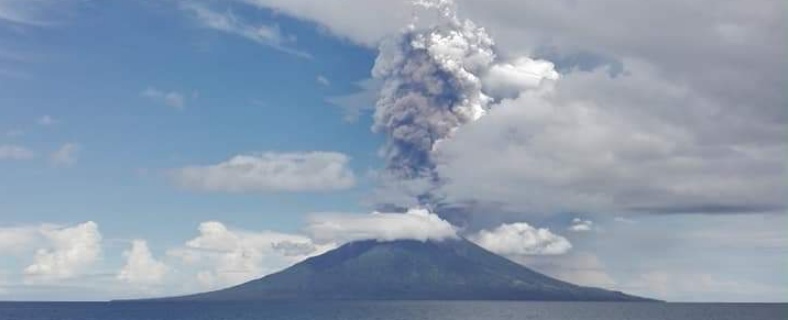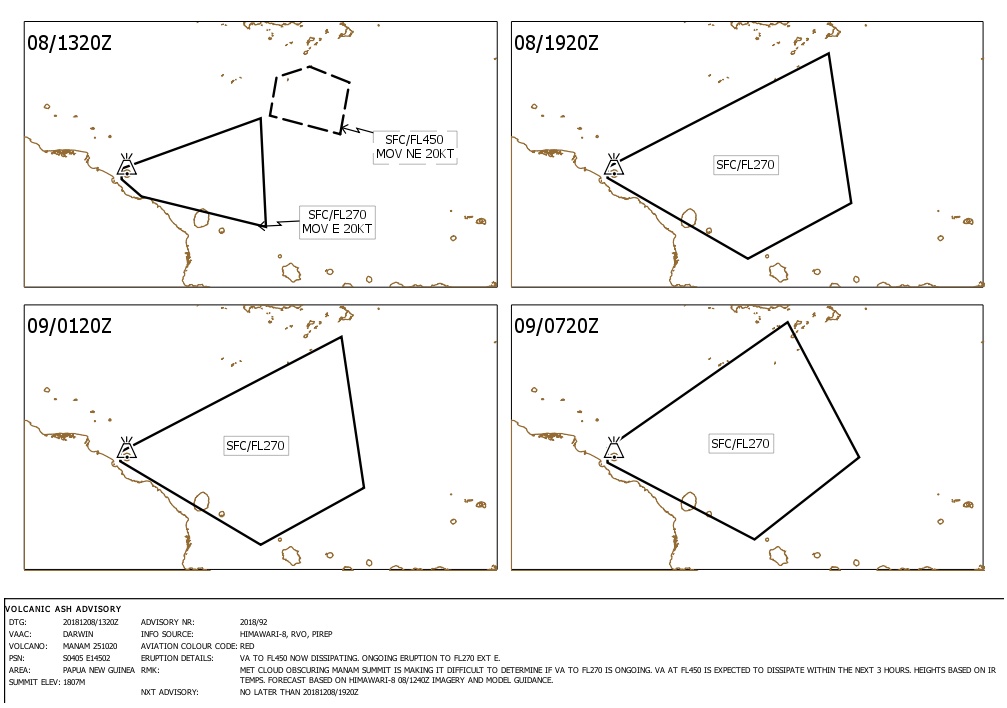High-impact eruption at Manam volcano, heavy ashfall blocking sunlight, P.N.G.

A powerful eruption started at Manam volcano, Papua New Guinea around 03:00 UTC on December 8, 2018. Heavy ashfall is falling on the island, blocking out sunlight.
Volcanic ash rose up to 13.7 km (45 000 feet) above sea level, according to the Darwin VAAC, forcing authorities to raise the Aviation Color Code to Red.
Heavy ashfall is blocking out sunlight on the island, locals report.
New #eruption of #Manam (#PapuaNewGuinea) today (Dec 8) – started just before the early PM (~1:30 pm) overpasses of SO2 sensing satellites. #Sentinel5P #Tropomi captured SO2 emissions at the eruption onset. Also getting SO2 alerts from other satellites. @EmmaLiu31 @BrendanVolc pic.twitter.com/7aemXZK9RN
— Simon Carn (@simoncarn) December 8, 2018
At 1pm Saturday the 8th December, off the west coast of Papua New Guinea Manam Island Volcano erupted #manam #volcano #evacuation #ringoffire pic.twitter.com/GPEIE6FMla
— Brian Malone (@MaloneBm) December 8, 2018
Breaking:
The Manam volcano in Madang has erupted again. Reports from the island say heavy ashfall is blocking out sunlight on the island. The eruption began at about 1pm. We provide updates as information becomes available. #manam #volcano #emergency#EMTV pic.twitter.com/35w8IXCCXB— Scott Waide (@Scott_Waide) December 8, 2018
Ash to 13.7 km (45 000 feet) a.s.l. is now dissipating, Darwin VAAC reported 13:20 UTC. Meteorological cloud is obscuring the summit, making it difficult to determine if volcanic ash to 8.2 km (27 000 feet), reported a few hours ago, is ongoing.
Volcanic ash to 13.7 km is expected to dissipate within the next 3 hours.

The previous high-impact eruption of this volcano took place on August 25, 2018, after island residents reported increased activity beginning an hour before.
According to the Darwin VAAC, ash plumes visible in satellite data rose to 15.2 km (50 000 ft) a.s.l. The plume drifted W and NW, causing ash and scoria to fall in areas from Dangale in the NNE to Jogari in the SW part of the island.
The most affected areas were Baliau and Kuluguma; residents reported fallen tree branches from the deposits, and conditions so dark that flashlights were needed to move around.
Lava flows traveled down the NE valley and pyroclastic-flow deposits were evident in the NE valley all the way to the sea.
The pyroclastic flows buried six houses in Boakure village though the occupants escaped to the nearby Abaria village.
About 2 000 people evacuated after the eruption.
Featured image credit: Scott Waide

The day CANNOT dawn without the darkness coming first,” can it?
Then if my calculations are correct THEN the eighth month of DECEMBER is cleaning day. EVERYTHING IS ALWAYS DUNE ON THE EIGHTH! YEAR, EIGHTH MONTH OR 8TH DAY
70×52 =3640 DAYS IN A JUBILEE YEAR but the guest must be first mad clean.